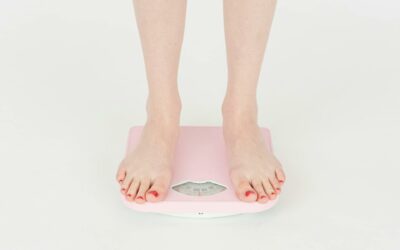We’re in the business of body composition (obviously) and while every person we see in our office has unique and specific goals, a majority of our work involves helping clients gain muscle mass and lose body fat. This is very difficult, but absolutely possible with the right tools and support. Here are our expert tips on how to safely and sustainably lose body fat and retain muscle mass.
There is a difference between “losing weight” and “changing body composition.” Weight is a single measurement on a scale: one number provided to assess the total mass of an object, in this case, a human body. Losing weight could occur with loss of muscle, loss of fat, or both at the same time. On the other hand, body composition analysis considers different “weights” of lean muscle mass (skeletal muscle, bone and interstitial fluids), and fat mass (peripheral adipose tissue and visceral body fat). (P.s. muscle weighs more than fat). Body composition analysis separates and compares the proportion of lean mass to fat mass so you have a more accurate picture of what your body is truly “made of.”
What’s in a goal?
The goal to simply “lose weight” often leaves out specification around what weight you want to lose. A well-intentioned approach to weight loss can easily result in losing substantial muscle mass and only a slight loss in fat mass if you are not careful. To lose body fat, implementing a nutrition plan according to your resting metabolic rate (RMR) and exercising strategically is a start, but what really helps move the needle is improving metabolic health. One of the best ways to improve metabolic health is – you guessed it – building muscle mass.
The case for building lean muscle
As mentioned, building muscle mass is crucial to metabolic health. Muscle tissue burns more calories at rest than fat tissue, which increases resting metabolic rate. Higher muscle proportion in the body is also associated with better blood sugar control (insulin sensitivity), improved sleep, stronger bones, reduced risk of injury and many other health benefits. We lose muscle mass at a rate of 3-5% per decade after age 30, so it is important to retain as much lean muscle as possible through the years to preserve long-term health.
Lose fat, keep muscle
In a typical body composition goal, there are two things happening at once: losing body fat and gaining lean muscle mass. This is a difficult balance that takes intentional and consistent attention to nutrition and exercise over time. Eating too few calories and working out too much can risk muscle catabolism (breakdown) and fat retention. Eating too much and exercising too little may result in an excess of energy stored as fat. To shift into fat burning mode and, at the same time, retain muscle mass, establish an accurate baseline RMR measurement, eat within a caloric threshold that supports fat loss (typically a deficit of 200-300 calories per day), and focus on resistance training activities at least 2 times a week. The quality of calories matter, too. A protein-rich diet with healthy, whole-food sources of carbohydrates and well-portioned healthy fats is generally a good place to start. Keeping processed foods, sugary beverages and alcohol at minimum is also important, not just for body composition goals, but for overall health. While results may differ from person to person, this is a general equation to begin noticing a shift in body composition. Keep in mind, change takes time and habits must be built along the way to ensure long-term adherence to a plan.
You can get started…TODAY
Sound overwhelming? Anything that requires change can be difficult. But not impossible. If you want to gain strength, lose body fat and increase your overall metabolic health, start small and build the right habits. As a first step, start to become aware of food intake (perhaps track with an app or write down what you consume each day), try a new type of resistance training activity, get enough high-quality sleep and drink plenty of water.
To get more specific with your goals, get a baseline analysis of body composition and RMR, then track your measurements once very 4-6 weeks to see if your habits are resulting in body composition changes. If not, reassess and tweak your plan. The right tools, like a DEXA scan and RMR test, and the right support with a nutrition coach, can help steer you on the right path towards your goals, and keep you healthier for life.



